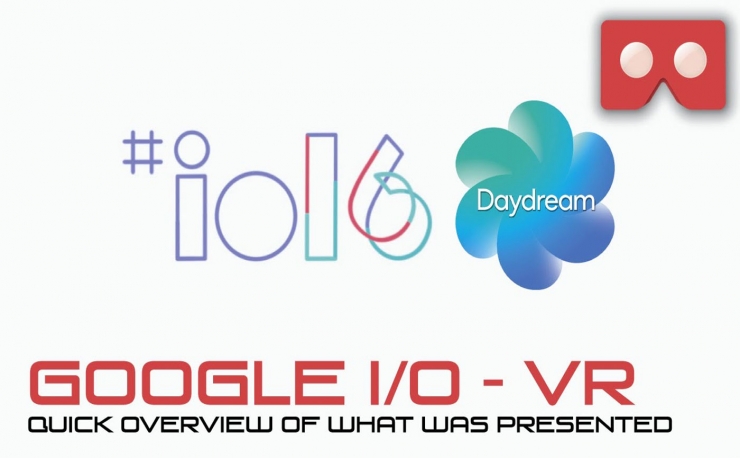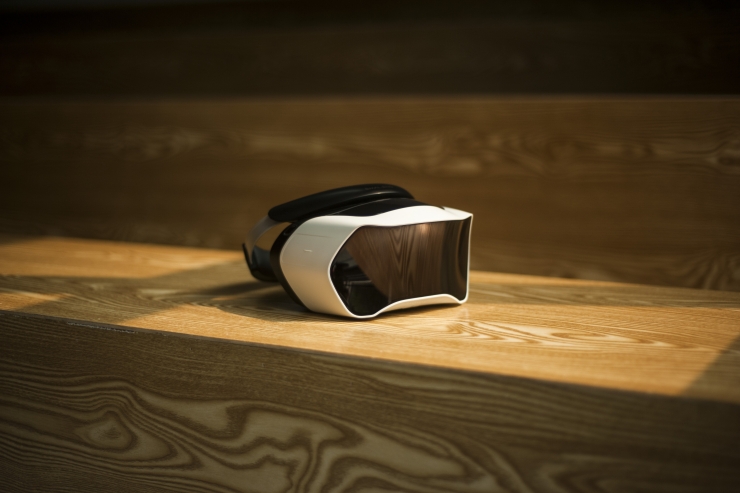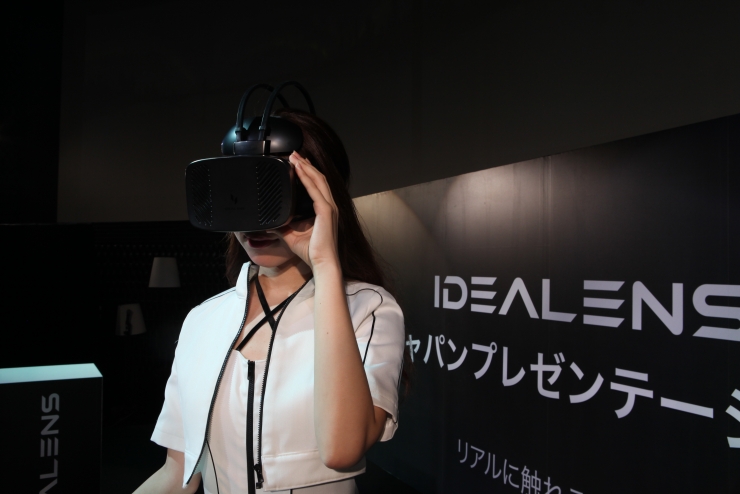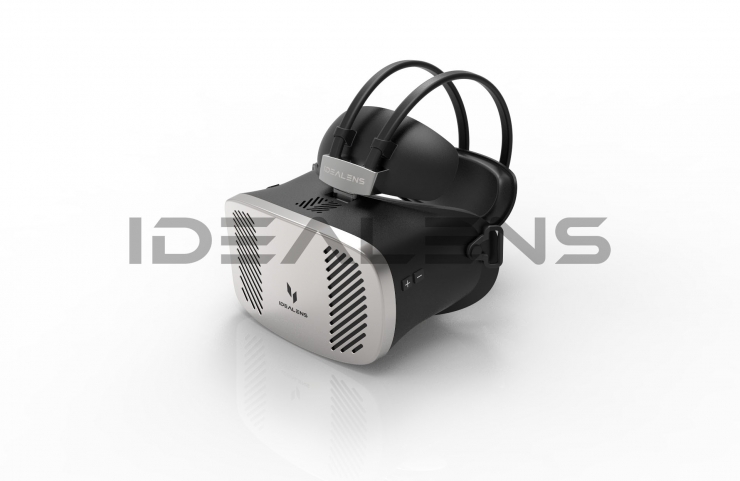July is nearing completion, but summer enthusiasm continues as it has done. The VR project that experienced capital winters is as hot as this summer. In the current entrepreneurial circles, whoever develops the cloths, if they do not mention the concepts of "VR" and "IP", they are embarrassed to say that they are at the forefront.
If you are in Shanghai at this time, you can also find a lot of VR related companies from the largest game show in the country. There are hardware vendors, content providers, and small development studios. Just yesterday, Sony announced on ChinaJoy that the PSVR National Banking Edition will be listed on the same day with the world on October 13 for a price of 2999 yuan. The VR hardware industry seems to be on the road to becoming mature, but we should not forget the giant Google lurking in this wave of heat.

At the developer conference in May this year, Google showed its tactics to the public in the field of VR—optimizing the Android operating system with the world’s largest mobile platform and launching a unified VR platform, Daydream. As long as the Android phone that meets the Daydream platform standard matches the Daydream hardware, it can become similar to the Gear VR-like head. And Google clearly stated that the Daydream platform will be officially launched this fall. For mobile phone manufacturers, this is undoubtedly a great opportunity for them to step into the mobile VR platform.
However, for the existing VR all-in-one machines in China, the Daydream platform has pushed them to the cusp of the storm: If you try your best to find a suitable development path, then you may be the next unicorn enterprise if you skyrocket and ride the wind and waves. If you choose the wrong direction, you will be devoured by the big waves and become crushed. So in this wave of waves, how do these all-in-one manufacturers think about this problem?
The little-known first generation machineSpeaking of IDEALENS, most people may be arrogant. Perhaps some people know that they recently held two press conferences for their second-generation devices, IDEALENS K2, in the US and Japan. In any case, everyone did not have the slightest impression of the first device K1 of IDEALENS. "In the beginning, we didn't want to do a VR all-in-one. It was a camera that happened to make a 120° wide field of view. So we wanted to say we wouldn't have to do an all-in-one machine. We wanted to do VR before, but There was no barrier to suffering, but after this lens appeared, I felt it was time to do this.†Dr. Song Haitao, founder of Idealens, told immersive.
The previous generation of IDEALENS K1 shipped a total of about 3,000 units, which is almost a negligible figure compared to Gear VR's millions of shipments. However, Song Haitao did not mind, and he did not intend to sell it too bluntly. More, because the first product is not directly facing consumers. “Our K1 all-in-one is mainly facing the B-side, and there are some sales in some channels.†Dr. Song added, “When I did an all-in-one, I didn’t want to make a cottage product. You want to If you want to have so many machines in China, everyone's FOV is about 96°. Why is this?"

This is indeed a serious problem. Now, it is popular in China that if we understand VR all-in-ones, it is not difficult to find that most of them are based on Gear VR hardware parameters. The experience is close to the Gear VR. The interactions are side trackpads. The conferences are all publicity campaigns. Undoubtedly, Gear VR is indeed the benchmark of the mobile VR industry, but the behavior of current one-box manufacturers has not only been limited to “learning from itâ€, quoting a VR content developer in China: “ In fact, these manufacturers and Gear VR There is not much difference in the grass-roots code part, not so much a difference as it is to add a layer of shells to the source code.As long as the relevant SDK is given to us, we can make some adjustments to the content directly on the other party. In the app store. "
So when we asked Dr. Song about the changes in the domestic VR all-in-one from the beginning to the present, Dr. Song replied: “From the beginning to the present, there has been no change in the technical level of domestic VR all-in-ones, and there has been no breakthrough. Sexual innovation, but this environment is very dirty - everyone is advocating our equipment can delay within 17 ms, and even boasting can be done within 10ms, in any case, we can not really In order to take measurements, of course, it is how they say what they want to say. So we have to go back to the mainland to open a press conference again in the United States, Japan, and in August, although it is also a need for us to take an internationalized line of propaganda, but on the other hand, It is also forced by these domestic manufacturers. "
Reliance on the foundation of life, all in core technologies and patentsFrom the existing all-in-one machines on the market, it is not difficult to see many parts that are now required for smart phones, such as accelerometers, gyroscopes, and mobile processors for rendering processing. This is one of the reasons why mobile chipmaker Qualcomm will be so enthusiastic in this area. In the first half of this year, we have already seen the VR integrated machine equipped with Xiaolong 820 chip enter the market.
With their advantage in many aspects such as supply chain and offline channels, handset manufacturers learn from Samsung and launch VR devices that are used with their own flagships. Riding on the Daydream platform, this wave can be said to be a matter of pushing the boat. As a result, have these existing one-box makers in China been able to wait? Dr. Song believes that there must be core technologies that can be widely demanded by the industry, and there are patent barriers commensurate with them. Only by surviving this huge wave can we build up a good patent barrier, and we can survive this wave. stay alive. Obviously, after the Daydream comes out, the low latency of 20ms is not the so-called core technology, and the remaining core necessary technologies are probably only the large FOV and cost-effective position tracking.

Idealens (Virtual World Technology Co., Ltd.) is responsible for the R&D and production of VR head display products, optical and position tracking companies. It was the "lucky" aspects of optics that prompted Idealens to develop its own VR all-in-one.
"What I started doing was lensing - I think a lot of things aren't designed, but they're found out. Then we get more and more, the more steps we make, the more solid, and then we have the idea of ​​making a product and start to get started with others." Cooperation," said Dr. Song. "The concept of VR has been ablaze. It was 2015. We started preparing some patents four or five years ago. In Qualcomm's words, this is called the core necessary barrier. "
Patents are divided into practical patents and invention patents. In simple terms, the difference between the two is that, under normal circumstances, practical innovation is not as large as the invention type, and the protected time is short (practical is The 10-year protection period and the invention-type 20-year protection period are not absolute. For example, some patents can only be applied for practical purposes and the quality is also excellent. However, the approval procedures and time for practical patents are shorter than those for inventions. But no matter which kind of patents have to be reviewed for a certain period of time. In theory, a company can achieve the purpose of “stacking patents†by applying a large number of practical patents, which of course also requires considerable human and financial resources.

"People usually think that patents are not very important, but they are not really like this, especially in new areas. It's like underwear, and you may not show it to others at ordinary times, but if you don't, you can't really do it." Above, Dr. Song explains, “But the more the number of patents, the better. We need to focus on the quality of the patent, not the quantity. â€
Currently IDEALENS has obtained more than 70 patents, including more than 20 invention patents. Mobile phone makers who have plugged in Daydream have an absolute advantage in terms of manufacturing and supply chain channels compared to start-up companies, but they may not have done a good job of patenting in new areas.
IDEALENS shows the immersive patent share of the schematic diagram, the optical program accounted for 45%, followed by the algorithm level accounted for 30%, and this proportion also reflects the previous IDEALENS investment in optical research, but also will It has a decisive influence on the business model of IDEALENS, especially after the emergence of the Daydream platform.
One machine is only part of the business, ODM is another part In the advertisements of various PC brands, the phrase “Intel inside†must not be the end. Intel, as a chip manufacturer, does not produce PCs itself but is the world’s largest supplier of PC chips. Dr. Song compared IDEALENS to Intel in the VR device: "We will do IDEALENS inside VR devices in the future." Why does Dr. Song use Intel as an IDEALENS analogy?
"Current VR all-in-one manufacturers can copy Gear VR from all other aspects, and then take the alternative solutions of other planners to find the foundry for production. Why is everyone's FOV and Gear VR are 96°, which is this aspect? The reason for this,†explains Dr. Song, “We have our own optical solutions and patents. There are already many manufacturers coming to us to discuss cooperation.â€
The development of optical technology for so many years is already a relatively mature field, but this is only in the field of static optics. In the VR device, we don't have much problem viewing static images through the lens, but the problem lies in the motion picture. Once the screen starts to move or the user's head is displaced, unqualified VR devices bring about Discomfort will be abnormally obvious. To reduce the discomfort people, need to start from several aspects, such as the performance of the hardware, the algorithm and the predicted low latency interpolated picture frames and the like to optimize the optical element and distortion correction algorithm, summed up the screen to the right - - The picture the eye sees matches the reaction that the brain produces.

The impact of such optics on VR is clear at a glance, and this aspect is particularly reflected in the handling of visual distortions. The algorithm of Samsung Gear VR has completed the processing of visual distortion at 96° FOV. If the FOV is large, the user's immersion will also increase, but what comes after it is how to deal with the visual distortion in this situation. The distortion in this area includes the processing of optical distortion and display distortion. The problem is relatively more complicated.
"Other major optical manufacturers are also watching this matter. If they do not consider patent issues, they certainly can make various shots, but the key is that they may not be able to figure out the algorithmic problems," Dr. Song told the author.
It is well known that Nvidia has also launched a suite of VRWorks to support developers. Is it a big chip maker that can't solve the algorithm problem? What we need to understand in this regard is that for different lenses, development kits need to be adjusted differently, not to mention the amount of work for these adjustments is not small. We have reason to believe that Nvidia's research and development capabilities can make corresponding algorithms, but this certainly takes a certain amount of time and money, and Nvidia is a chip-level manufacturer. The accumulation on optical may not be as good as that of related industries.

Therefore, Idealens' consideration in this regard is that no matter how the VR head-stand machine does, they will use their own accumulation in optics and position tracking to provide solutions for various VR device manufacturers. "At the system optimization level, we were lucky enough to achieve a full platform kill. We can only do this on Google and us. After the Daydream platform comes out, everyone can use the Daydream platform to optimize their systems to achieve a delay of less than 20ms. But on this level of optics and location tracking, perhaps Google will also cooperate with us in the future." Dr. Song said, "In terms of content development, we have our own SDK. The equipment vendors that we cooperate with us adopt our The solution also means that developers need to use our supporting SDK for content development. In addition, we have donated equipment to some European and American developers."
The significance of IDEALENS's product is that it is displayed to the outside world to see that they have corresponding development capabilities, and ODM is an important part of their business model. Therefore, while IDEALENS's products are oriented toward consumers, they also carry the mission of experimenting with the company's newly developed technology.